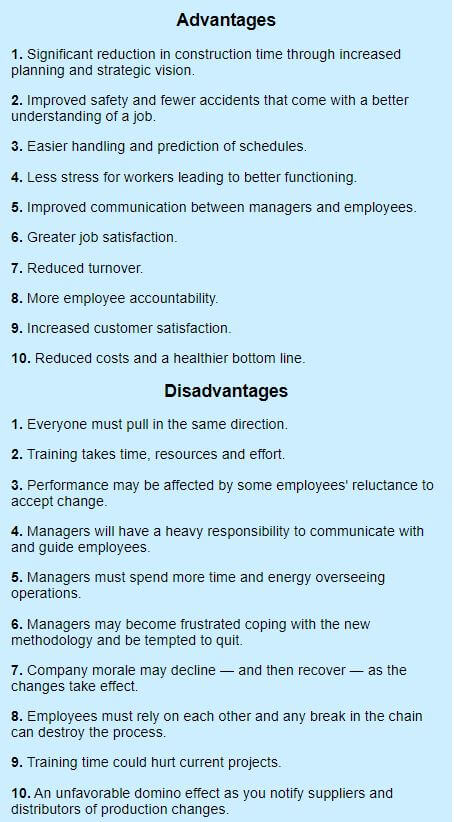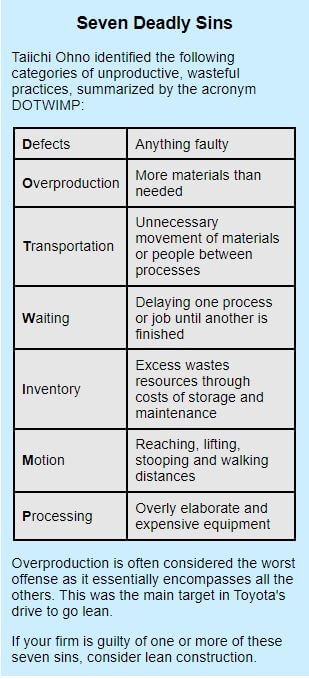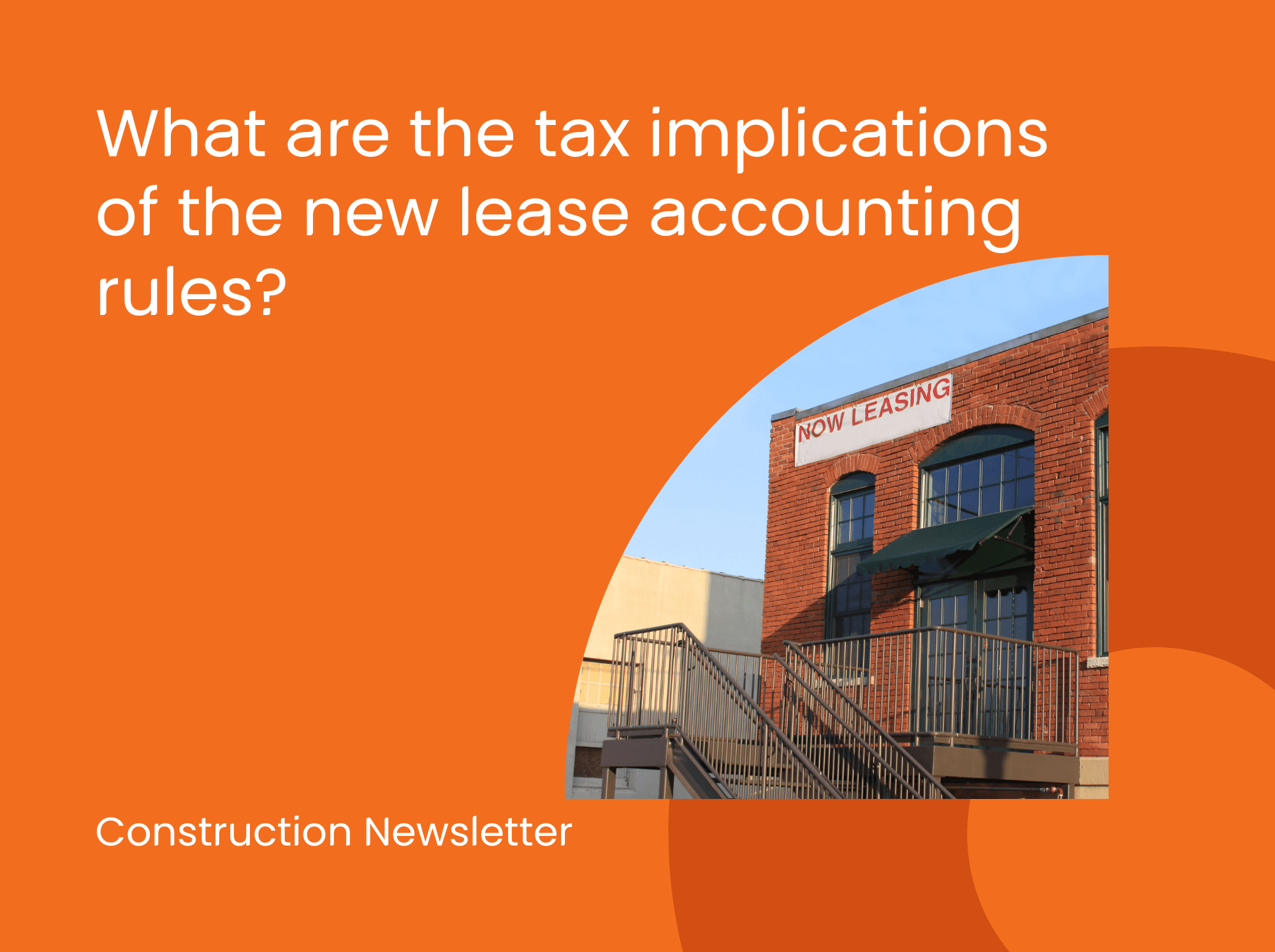Taking a page from principles developed in Japan and used successfully by U.S. manufacturers, some cost-conscious leaders in the construction industry are advocating the use of lean production techniques.
The focus of lean construction is simple: Understand the real value your business delivers to its customers and remove any waste that prevents that value from being delivered. Sounds sensible, but adapting to the changes may not be simple.
Lean manufacturing generally results in faster assembly, less material waste and greater volume. It was initially developed for Toyota assembly lines in Japan by the company’s former chief engineer, the late Taiichi Ohno.
Ohno explained that the objective of the Toyota Production System was “to produce the right product at the right time in the right quantity for the customer and to produce exactly what you need and nothing more.”
As a result of Toyota’s efforts in developing lean manufacturing, seven wastes were identified (see right-hand box).
Potentially Long Process
Applying lean construction to your business can provide benefits, but that is not likely to happen overnight. Advocates say the technique requires building a complete corporate culture around the lean philosophy. That means it could take years for the principles to take root as your company and employees learn to do more with less.
Lean construction is more than running a tight ship, it is a proactive strategy to reduce or eliminate factors that lead to poor productivity. For instance, you may start to spend less on equipment needs for specific projects while beginning to address the issues that hampered crews in the first place.
One of the driving forces behind lean construction in the U.S. has been fallout from a struggling economy during which the construction industry suffered from layoffs and cutbacks in services and products. The economy is beginning to show signs of recovery, but problems remain for construction companies, including:
- Lack of comprehensive written project plans.
- Inadequate tracking systems for field leaders and crews.
- Validation of job estimates based on budget.
- Insufficient periodic job reviews and adjustments.
- Excess inventory.
- Insufficient job preparation.
At its core, lean construction is about identifying and eliminating waste in every aspect of construction projects, from marketing to estimates, sales, preconstruction and closeouts. It is less about doing things with fewer workers and materials than about consistently performing high-quality work.
Pros and Cons
But if the technique is so successful, why hasn’t every firm adopted it? As is often the case with any new approach, initiating lean construction is not a slam dunk. You need to determine if the advantages outweigh the disadvantages. Consider these 20 points divided evenly on both sides of the ledger:

Lean thinking has been called a salvation by some and a gimmick by others. The truth likely falls somewhere in-between. However, due to undeniable success in the manufacturing sector, this approach may warrant your attention. With help from your advisors, a thorough analysis of your operation can determine if the lean approach is right for you.

Copyright © 2022



